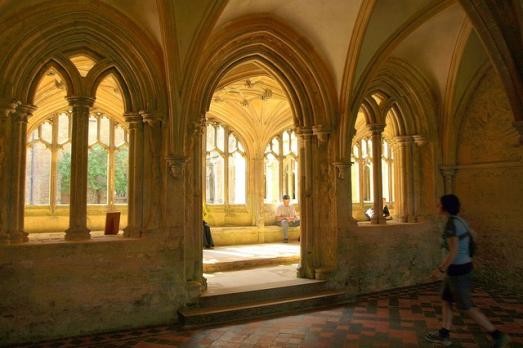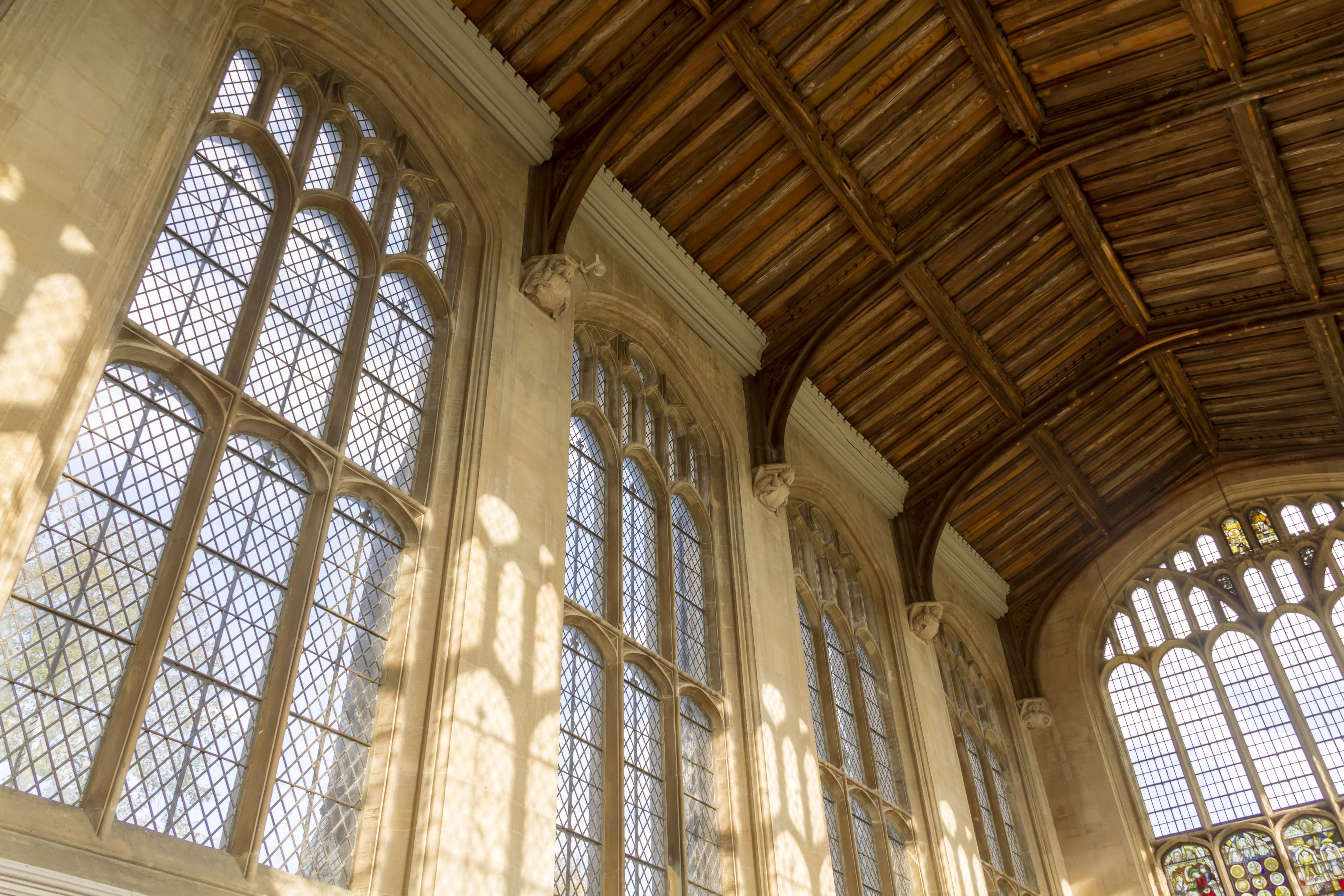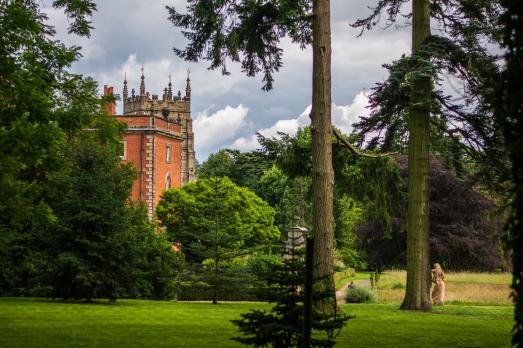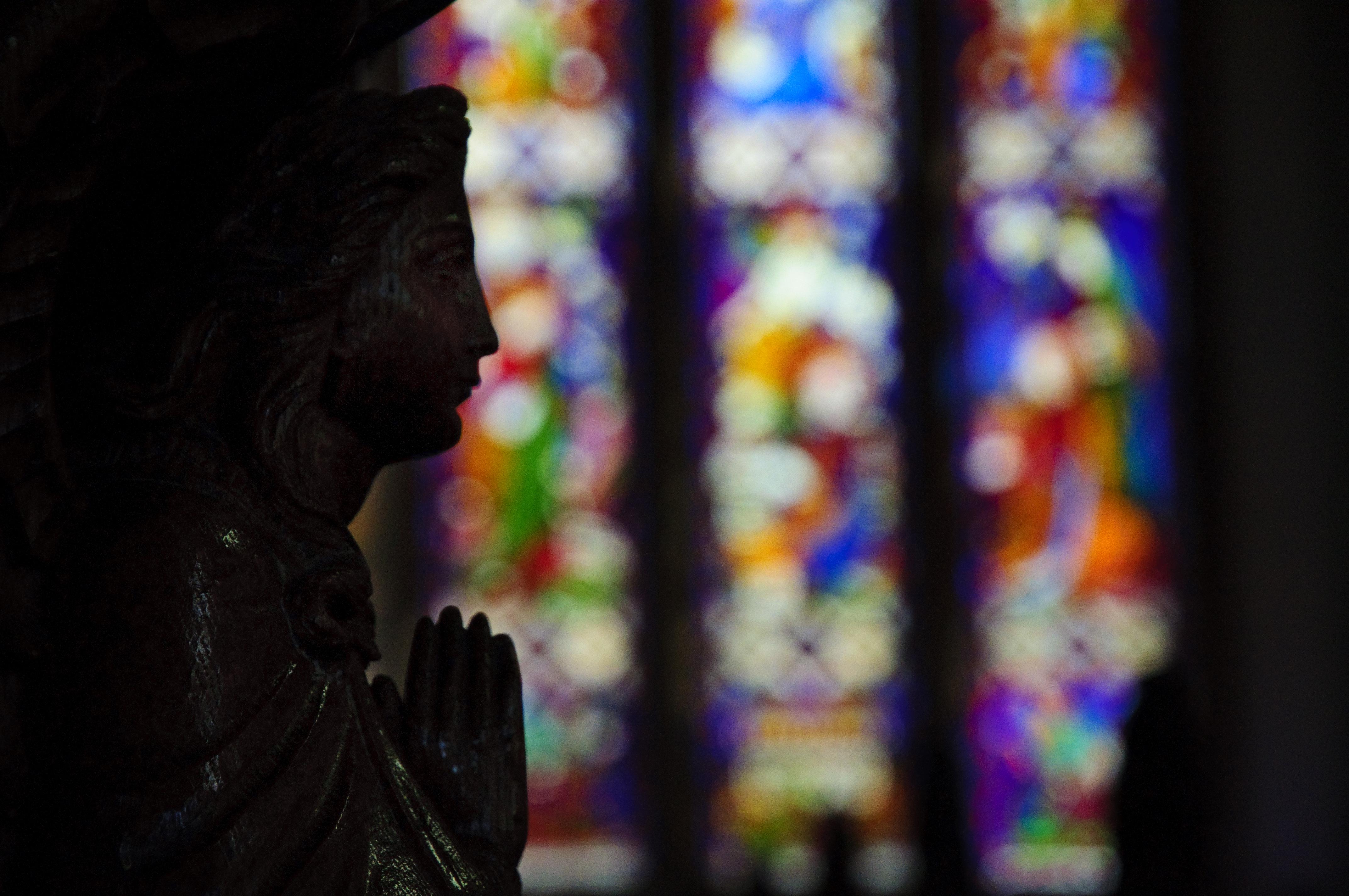
Lacock Abbey
Lacock Abbey is packed with history, starting first as an abbey and nunnery, then became a Tudor family home.

From a world famous chapel to a medieval church on a rocky island, there are plenty of spiritual spaces to explore. Other National Trust places are also neighbours to amazing churches and chapels across England and Wales.

Lacock Abbey is packed with history, starting first as an abbey and nunnery, then became a Tudor family home.

This rare survival of 13th century domestic architecture gives an illuminating impression of the life of a rich medieval family.

Built in a time of dissent and persecution, this unique secluded chapel was designed to look like a farmyard barn in order to avoid being discovered.

Sitting on top of the hill, just across the road from Canons Ashby House, this church is looked after by the National Trust, it is a fragment of the west end of the nave of the Augustinian Priory founded around 1150.

The abbey is a spectacular sight, perched on a rocky hill and surrounded by blue waters, at low tide, the Mount is approached by a historic stone causeway, used by pilgrims in the Middle Ages.

In 1132, 13 monks came here to start a simpler life. Over 400 years later, when Henry VIII demanded the closure of the Abbey, the monks left behind the most complete Cistercian abbey remains in the country.

The chapel is in an idyllic position, with the big house on one side and a lake on the other, built during the 17th century Commonwealth.

Tucked away in a cosy corner of the market square, discover the oldest building in Buckingham. It’s had many uses and today it’s a thriving second hand bookshop and coffee shop.

This picturesque and rustic stone chapel is thought to have been the chantry for Shap Abbey originally. It was built around the 16th century and has been used as a cottage and meeting house during its long history.

This modest red brick building tucked away in a quiet corner of Hampshire houses an unexpected treasure; an epic series of large scale murals, by the acclaimed war artist Sir Stanley Spencer.

When you visit Buckland, you follow over 700 years of footsteps; from the Cistercians who built the Abbey and farmed the estate, to seafarers Grenville and Drake who changed the fate of the country.

Once a Cistercian abbey, founded in 1246 by Richard of Cornwall and dissolved Christmas Eve 1539.

GB1984

Aberdaron was the principal setting out place for pilgrims going to Bardsey Island, so was very busy in medieval times.

Sharing the limelight with Tattershall Castle is Lincolnshire's grandest Perpendicular church, a collegiate foundation of the mid 15th century.

A temple to Apollo where George Bernard Shaw played the organ.

Sharing the limelight with Tattershall Castle is Lincolnshire's grandest Perpendicular church, a collegiate foundation of the mid 15th century.
